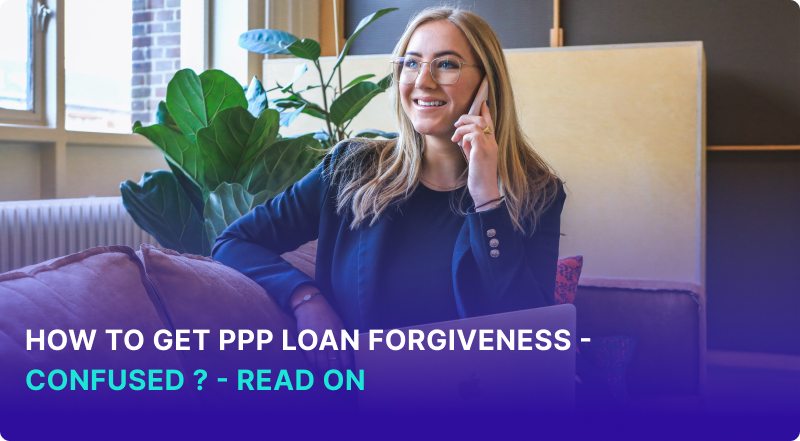
So you successfully completed your sba loan application process and you've been granted the PPP loan and now you hear that the loan can be forgiven, but what exactly is PPP loan forgiveness? This means that the Paycheck Protection Program loans that were granted as a response to the Coronavirus Pandemic may not have to be repaid if the funds were used for the designated purposes the loan was intended for. So how do you receive repayment exemption?
Key Points:
- Can you document what the loan was spent on ?
- Invest the time - it will pay off in the end
- Write a check list and follow it methodically
Essential PPP Loan Forgiveness Rules
One of the most appealing features of PPP loans was that, in many instances, the loans could be forgiven – if the borrower could clear these administrative hurdles first.
Any employer who has either added new employees or maintained current staffing levels, and who has kept salary levels the same (or moved them higher) than pre-pandemic levels, will likely have their PPP loans forgiven.
Even if staffing levels and salaries were cut moderately, the business can still earn partial forgiveness on their PPP loans.
More specifically, PPP loans can be forgiven if:
- At least 60% of the PPP loan is used to cover payroll costs.
- The leftover 40% unused for salary needs is used to cover rent and/or mortgage interest payments; utility bills; business-related software; property damage; or pandemic related needs like personal protective equipment
How to Apply for PPP Loan Forgiveness
Completing loan forgiveness applications
Companies looking for PPP loan forgiveness can start by completing the loan forgiveness applications provided by the financial institution that funded the PPP loan or directly through the U.S. Small Business Administration. Here's a sample PPP loan forgiveness application to use as a guideline.
Info you’ll need to provide
- SBA PPP loan number
- Financial institution/lender PPP loan number
- Business name, address and contact information
- PPP loan amount and funding date (and any subsequent PPP loan increases)
- Number of employees
Filling out the loan forgiveness amount
You’ll also be asked to fill out an estimated PPP loan forgiveness amount based upon business operational costs.
Note that sole proprietors and self-employed individuals will fill out a slightly modified PPP loan forgiveness application – see an example here.
Next Steps
The U.S. Small Business Administration, in partnership with the financial institution granting the PPP loan, will review the PPP loan forgiveness application. Your lender will reply with any information on loan forgiveness amounts and how to handle repayments.
- If SBA undertakes a review of your loan, SBA or your lender will notify you of the review and the SBA loan review decision
- You have the right to appeal certain SBA loan review decisions.
- Your lender is responsible for notifying you of the forgiveness amount paid by SBA and the date on which your first payment will be due, if applicable.
Pro Tips On How To Get Your PPP Loan Forgiven
Maximize your chances of getting your PPP loan forgiven with these PRO TIPS:
- Establish a separate bank account. Since PPP loan forgiveness calculations (established by the SBA) rely so much on how a business allocates its PPP funds, it’s a good idea to set up a separate bank account for your PPP loan.
Doing so makes it much easier to know where the loan money is going. It also makes it easier to fill out the SBA or financial institution loan forgiveness application. - Document your loan activity. Using the separate bank account, document everything you can that relates to your PPP loan. That includes:
- where the loan money was spent
- the date you received the loan
- any accrued interest on the loan
- and any bills, invoices, journal entries, and bank statements related to the PPP loan.
That will make your PPP loan forgiveness application easier. In the unfortunate event you get audited by the SBA, having good records can also help you make a strong case for loan audit clearance. - Keep in regular contact with your financial institution. As most PPP loans are issued by private banks, credit unions and other financial institutions, it’s highly advisable to stay in close contact with your lender. Not only will that reduce or eliminate any miscommunication on the loan, it will give you advance knowledge on what exactly needs to be done to have the PPP loan forgiven.
- Have a trusted financial professional review your loan forgiveness application. Having a solid, experienced financial professional on your side (i.e., financial planner, attorney, or accountant) can ensure your loan paperwork is processed correctly (especially your loan forgiveness application.) Errors, omissions and miscommunication can lead to major headaches when dealing with the SBA or your financial institution, so bring a trusted financial pro on board to keep your PPP loan experience on the right track.
Your focus now should be on proper handling of loan funds and on taking the steps necessary to get the loan forgiven.
Use the information and tips listed above to ensure your PPP loan experience is a fruitful one – and hopefully, it’s an experience that winds up with the loan forgiven.
Frequently Asked Questions (FAQs)
The SBA does have a call center that handles PPP loan forgiveness queries – at 877-552-2692.